Fuyuan Lyu
Timing is important: Risk-aware Fund Allocation based on Time-Series Forecasting
May 30, 2025Abstract:Fund allocation has been an increasingly important problem in the financial domain. In reality, we aim to allocate the funds to buy certain assets within a certain future period. Naive solutions such as prediction-only or Predict-then-Optimize approaches suffer from goal mismatch. Additionally, the introduction of the SOTA time series forecasting model inevitably introduces additional uncertainty in the predicted result. To solve both problems mentioned above, we introduce a Risk-aware Time-Series Predict-and-Allocate (RTS-PnO) framework, which holds no prior assumption on the forecasting models. Such a framework contains three features: (i) end-to-end training with objective alignment measurement, (ii) adaptive forecasting uncertainty calibration, and (iii) agnostic towards forecasting models. The evaluation of RTS-PnO is conducted over both online and offline experiments. For offline experiments, eight datasets from three categories of financial applications are used: Currency, Stock, and Cryptos. RTS-PnO consistently outperforms other competitive baselines. The online experiment is conducted on the Cross-Border Payment business at FiT, Tencent, and an 8.4\% decrease in regret is witnessed when compared with the product-line approach. The code for the offline experiment is available at https://github.com/fuyuanlyu/RTS-PnO.
What, How, Where, and How Well? A Survey on Test-Time Scaling in Large Language Models
Mar 31, 2025Abstract:As enthusiasm for scaling computation (data and parameters) in the pretraining era gradually diminished, test-time scaling (TTS), also referred to as ``test-time computing'' has emerged as a prominent research focus. Recent studies demonstrate that TTS can further elicit the problem-solving capabilities of large language models (LLMs), enabling significant breakthroughs not only in specialized reasoning tasks, such as mathematics and coding, but also in general tasks like open-ended Q&A. However, despite the explosion of recent efforts in this area, there remains an urgent need for a comprehensive survey offering a systemic understanding. To fill this gap, we propose a unified, multidimensional framework structured along four core dimensions of TTS research: what to scale, how to scale, where to scale, and how well to scale. Building upon this taxonomy, we conduct an extensive review of methods, application scenarios, and assessment aspects, and present an organized decomposition that highlights the unique functional roles of individual techniques within the broader TTS landscape. From this analysis, we distill the major developmental trajectories of TTS to date and offer hands-on guidelines for practical deployment. Furthermore, we identify several open challenges and offer insights into promising future directions, including further scaling, clarifying the functional essence of techniques, generalizing to more tasks, and more attributions.
A Predict-Then-Optimize Customer Allocation Framework for Online Fund Recommendation
Mar 05, 2025Abstract:With the rapid growth of online investment platforms, funds can be distributed to individual customers online. The central issue is to match funds with potential customers under constraints. Most mainstream platforms adopt the recommendation formulation to tackle the problem. However, the traditional recommendation regime has its inherent drawbacks when applying the fund-matching problem with multiple constraints. In this paper, we model the fund matching under the allocation formulation. We design PTOFA, a Predict-Then-Optimize Fund Allocation framework. This data-driven framework consists of two stages, i.e., prediction and optimization, which aim to predict expected revenue based on customer behavior and optimize the impression allocation to achieve the maximum revenue under the necessary constraints, respectively. Extensive experiments on real-world datasets from an industrial online investment platform validate the effectiveness and efficiency of our solution. Additionally, the online A/B tests demonstrate PTOFA's effectiveness in the real-world fund recommendation scenario.
Crowd Comparative Reasoning: Unlocking Comprehensive Evaluations for LLM-as-a-Judge
Feb 18, 2025



Abstract:LLM-as-a-Judge, which generates chain-of-thought (CoT) judgments, has become a widely adopted auto-evaluation method. However, its reliability is compromised by the CoT reasoning's inability to capture comprehensive and deeper details, often leading to incomplete outcomes. Existing methods mainly rely on majority voting or criteria expansion, which is insufficient to address the limitation in CoT. We propose Crowd-based Comparative Evaluation, which introduces additional crowd responses to compare with the candidate responses, thereby exposing deeper and more comprehensive details within the candidate responses. This process effectively guides LLM-as-a-Judge to provide a more detailed CoT judgment. Extensive experiments demonstrate that our approach enhances evaluation reliability, achieving an average accuracy gain of 6.7% across five benchmarks. Moreover, our method produces higher-quality CoTs that facilitate judge distillation and exhibit superior performance in rejection sampling for supervised fine-tuning (SFT), referred to as crowd rejection sampling, thereby enabling more efficient SFT. Our analysis confirms that CoTs generated by ours are more comprehensive and of higher quality, and evaluation accuracy improves as inference scales.
Fusion Matters: Learning Fusion in Deep Click-through Rate Prediction Models
Nov 24, 2024



Abstract:The evolution of previous Click-Through Rate (CTR) models has mainly been driven by proposing complex components, whether shallow or deep, that are adept at modeling feature interactions. However, there has been less focus on improving fusion design. Instead, two naive solutions, stacked and parallel fusion, are commonly used. Both solutions rely on pre-determined fusion connections and fixed fusion operations. It has been repetitively observed that changes in fusion design may result in different performances, highlighting the critical role that fusion plays in CTR models. While there have been attempts to refine these basic fusion strategies, these efforts have often been constrained to specific settings or dependent on specific components. Neural architecture search has also been introduced to partially deal with fusion design, but it comes with limitations. The complexity of the search space can lead to inefficient and ineffective results. To bridge this gap, we introduce OptFusion, a method that automates the learning of fusion, encompassing both the connection learning and the operation selection. We have proposed a one-shot learning algorithm tackling these tasks concurrently. Our experiments are conducted over three large-scale datasets. Extensive experiments prove both the effectiveness and efficiency of OptFusion in improving CTR model performance. Our code implementation is available here\url{https://github.com/kexin-kxzhang/OptFusion}.
Comprehending Knowledge Graphs with Large Language Models for Recommender Systems
Oct 16, 2024Abstract:Recently, the introduction of knowledge graphs (KGs) has significantly advanced recommender systems by facilitating the discovery of potential associations between items. However, existing methods still face several limitations. First, most KGs suffer from missing facts or limited scopes. This can lead to biased knowledge representations, thereby constraining the model's performance. Second, existing methods typically convert textual information into IDs, resulting in the loss of natural semantic connections between different items. Third, existing methods struggle to capture high-order relationships in global KGs due to their inefficient layer-by-layer information propagation mechanisms, which are prone to introducing significant noise. To address these limitations, we propose a novel method called CoLaKG, which leverages large language models (LLMs) for knowledge-aware recommendation. The extensive world knowledge and remarkable reasoning capabilities of LLMs enable them to supplement KGs. Additionally, the strong text comprehension abilities of LLMs allow for a better understanding of semantic information. Based on this, we first extract subgraphs centered on each item from the KG and convert them into textual inputs for the LLM. The LLM then outputs its comprehension of these item-centered subgraphs, which are subsequently transformed into semantic embeddings. Furthermore, to utilize the global information of the KG, we construct an item-item graph using these semantic embeddings, which can directly capture higher-order associations between items. Both the semantic embeddings and the structural information from the item-item graph are effectively integrated into the recommendation model through our designed representation alignment and neighbor augmentation modules. Extensive experiments on four real-world datasets demonstrate the superiority of our method.
RevisEval: Improving LLM-as-a-Judge via Response-Adapted References
Oct 07, 2024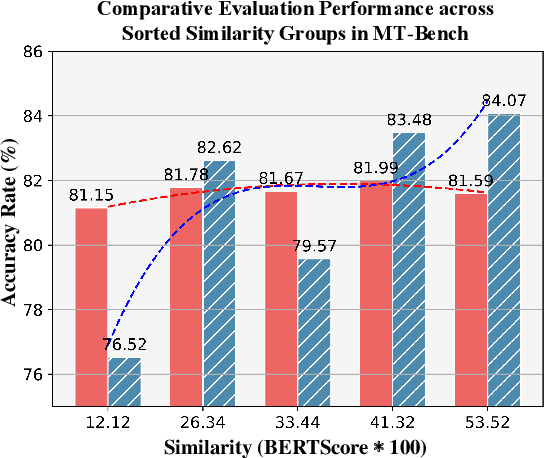
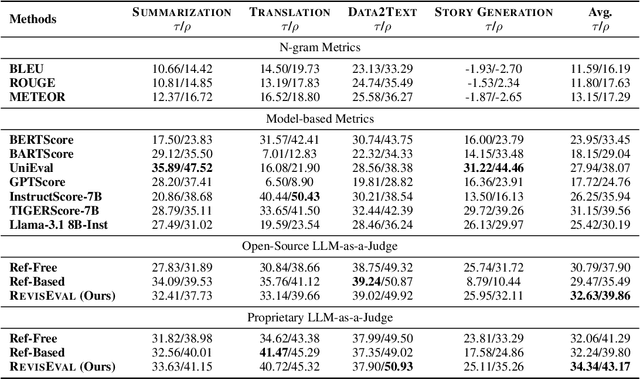

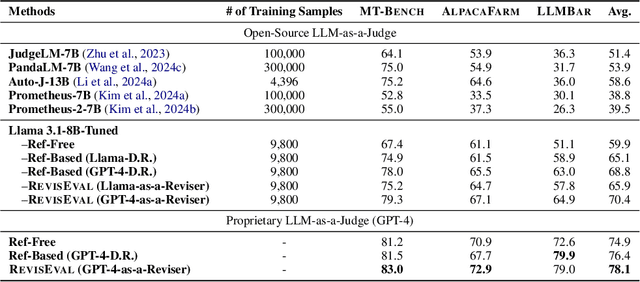
Abstract:With significant efforts in recent studies, LLM-as-a-Judge has become a cost-effective alternative to human evaluation for assessing the text generation quality in a wide range of tasks. However, there still remains a reliability gap between LLM-as-a-Judge and human evaluation. One important reason is the lack of guided oracles in the evaluation process. Motivated by the role of reference pervasively used in classic text evaluation, we introduce RevisEval, a novel text generation evaluation paradigm via the response-adapted references. RevisEval is driven by the key observation that an ideal reference should maintain the necessary relevance to the response to be evaluated. Specifically, RevisEval leverages the text revision capabilities of large language models (LLMs) to adaptively revise the response, then treat the revised text as the reference (response-adapted reference) for the subsequent evaluation. Extensive experiments demonstrate that RevisEval outperforms traditional reference-free and reference-based evaluation paradigms that use LLM-as-a-Judge across NLG tasks and open-ended instruction-following tasks. More importantly, our response-adapted references can further boost the classical text metrics, e.g., BLEU and BERTScore, compared to traditional references and even rival the LLM-as-a-Judge. A detailed analysis is also conducted to confirm RevisEval's effectiveness in bias reduction, the impact of inference cost, and reference relevance.
Mixed-Precision Embeddings for Large-Scale Recommendation Models
Sep 30, 2024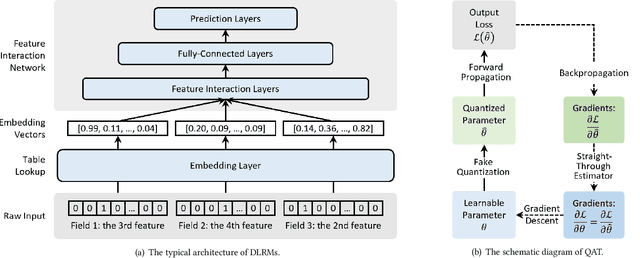
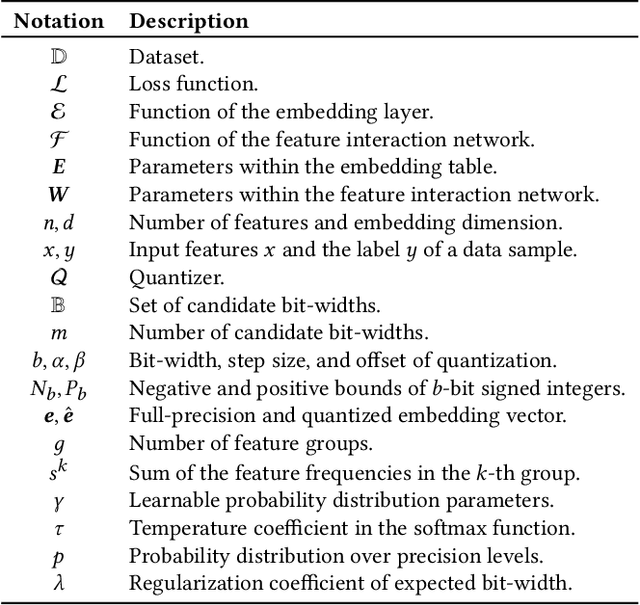
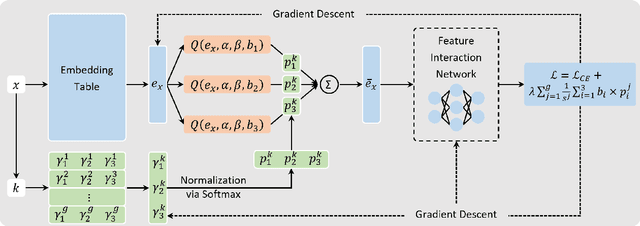

Abstract:Embedding techniques have become essential components of large databases in the deep learning era. By encoding discrete entities, such as words, items, or graph nodes, into continuous vector spaces, embeddings facilitate more efficient storage, retrieval, and processing in large databases. Especially in the domain of recommender systems, millions of categorical features are encoded as unique embedding vectors, which facilitates the modeling of similarities and interactions among features. However, numerous embedding vectors can result in significant storage overhead. In this paper, we aim to compress the embedding table through quantization techniques. Given that features vary in importance levels, we seek to identify an appropriate precision for each feature to balance model accuracy and memory usage. To this end, we propose a novel embedding compression method, termed Mixed-Precision Embeddings (MPE). Specifically, to reduce the size of the search space, we first group features by frequency and then search precision for each feature group. MPE further learns the probability distribution over precision levels for each feature group, which can be used to identify the most suitable precision with a specially designed sampling strategy. Extensive experiments on three public datasets demonstrate that MPE significantly outperforms existing embedding compression methods. Remarkably, MPE achieves about 200x compression on the Criteo dataset without comprising the prediction accuracy.
OptDist: Learning Optimal Distribution for Customer Lifetime Value Prediction
Aug 16, 2024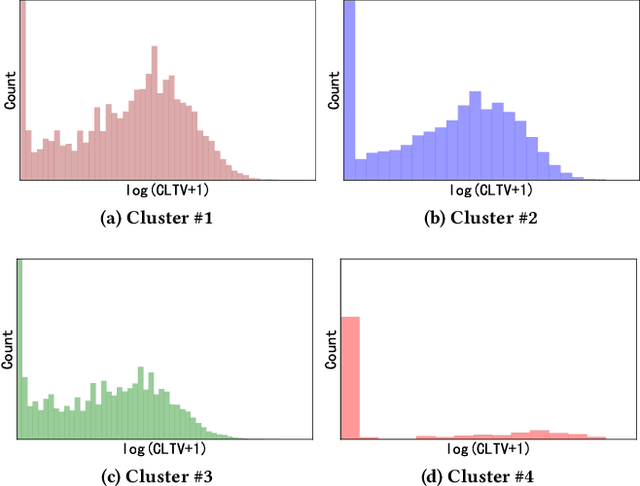

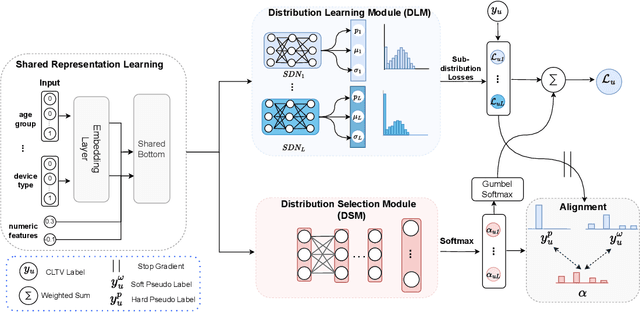
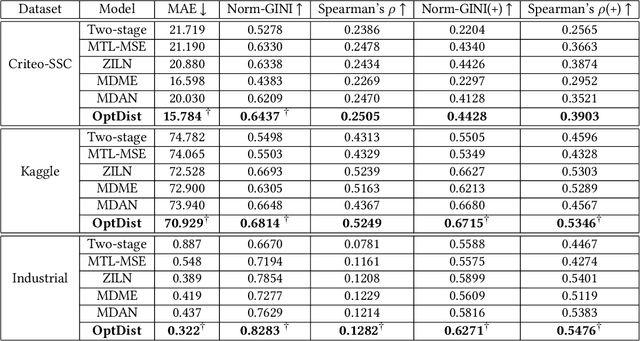
Abstract:Customer Lifetime Value (CLTV) prediction is a critical task in business applications. Accurately predicting CLTV is challenging in real-world business scenarios, as the distribution of CLTV is complex and mutable. Firstly, there is a large number of users without any consumption consisting of a long-tailed part that is too complex to fit. Secondly, the small set of high-value users spent orders of magnitude more than a typical user leading to a wide range of the CLTV distribution which is hard to capture in a single distribution. Existing approaches for CLTV estimation either assume a prior probability distribution and fit a single group of distribution-related parameters for all samples, or directly learn from the posterior distribution with manually predefined buckets in a heuristic manner. However, all these methods fail to handle complex and mutable distributions. In this paper, we propose a novel optimal distribution selection model OptDist for CLTV prediction, which utilizes an adaptive optimal sub-distribution selection mechanism to improve the accuracy of complex distribution modeling. Specifically, OptDist trains several candidate sub-distribution networks in the distribution learning module (DLM) for modeling the probability distribution of CLTV. Then, a distribution selection module (DSM) is proposed to select the sub-distribution for each sample, thus making the selection automatically and adaptively. Besides, we design an alignment mechanism that connects both modules, which effectively guides the optimization. We conduct extensive experiments on both two public and one private dataset to verify that OptDist outperforms state-of-the-art baselines. Furthermore, OptDist has been deployed on a large-scale financial platform for customer acquisition marketing campaigns and the online experiments also demonstrate the effectiveness of OptDist.
Collaborative Performance Prediction for Large Language Models
Jul 01, 2024

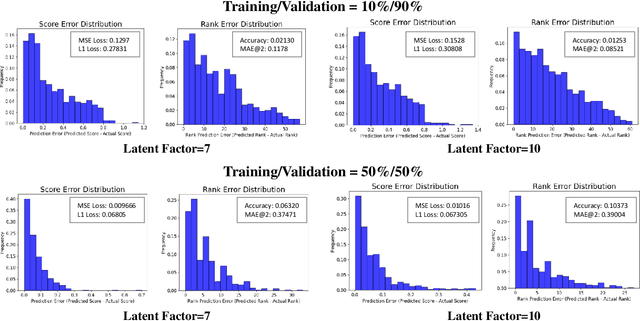

Abstract:Comprehensively understanding and accurately predicting the performance of large language models across diverse downstream tasks has emerged as a pivotal challenge in NLP research. The pioneering scaling law on downstream works demonstrated intrinsic similarities within model families and utilized such similarities for performance prediction. However, they tend to overlook the similarities between model families and only consider design factors listed in the original scaling law. To overcome these limitations, we introduce a novel framework, Collaborative Performance Prediction (CPP), which significantly enhances prediction accuracy by leveraging the historical performance of various models on downstream tasks and other design factors for both model and task. We also collect a collaborative data sourced from online platforms containing both historical performance and additional design factors. With the support of the collaborative data, CPP not only surpasses traditional scaling laws in predicting the performance of scaled LLMs but also facilitates a detailed analysis of factor importance, an area previously overlooked.
 Add to Chrome
Add to Chrome Add to Firefox
Add to Firefox Add to Edge
Add to Edge